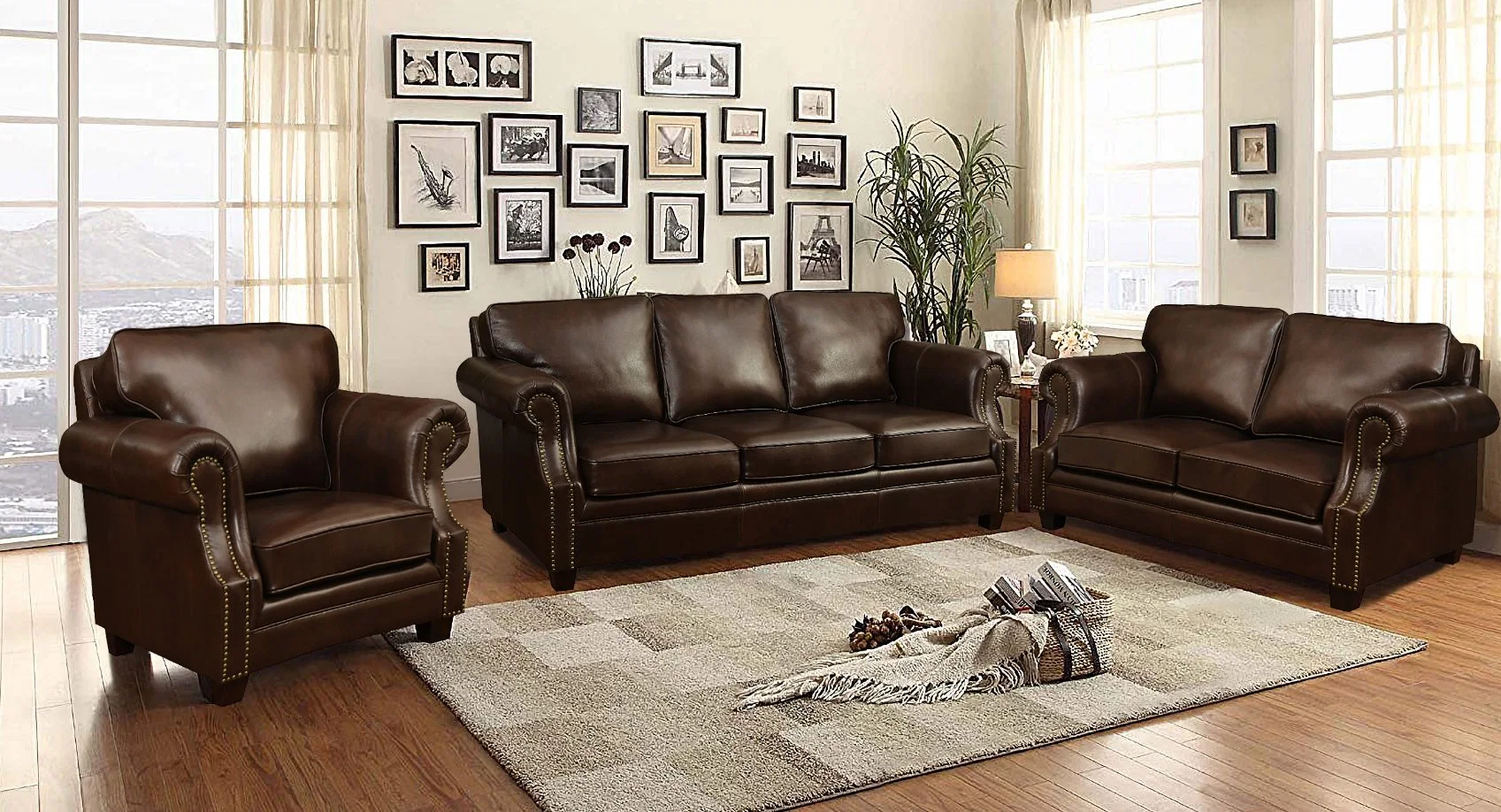A leather sofa is not only a beautiful and luxurious addition to your home but also an investment that can last for many years. However, over time, even the highest quality leather can show signs of wear and tear. Scratches, scuffs, and fading can detract from the sofa’s appearance and diminish its overall appeal. But don’t worry! With a little knowledge and some simple techniques, you can restore your leather sofa to its former glory. In this article, we will provide you with valuable tips and tricks for repairing and restoring your leather furniture. Get ready to bring back the elegance and charm of your beloved leather sofa!
Assess the Damage
The first step in restoring your leather sofa is to assess the damage. Carefully inspect the surface of the leather for scratches, cracks, discoloration, or fading. Take note of any areas that require repair or restoration. By understanding the extent of the damage, you can plan and prioritize your repair efforts effectively.
Clean the Leather
Before proceeding with any repairs, it’s important to thoroughly clean your leather sofa. Use a mild soap or leather cleaner specifically designed for use on leather furniture. Gently wipe the surface with a soft cloth or sponge, paying attention to any soiled or stained areas. Avoid using harsh chemicals or abrasive materials that could further damage the leather.
Repair Scratches and Scuffs
Scratches and scuffs are common issues that can mar the appearance of your leather sofa. Fortunately, there are simple ways to repair them. For minor scratches, use a leather repair kit that contains color-matched repair compounds. Apply the compound to the scratched area and blend it with the surrounding leather using a small applicator. For deeper scratches or scuffs, you may need to seek professional help to achieve a seamless repair.
Restore Color and Fading
Over time, leather can fade and lose its original color. To restore color and vibrancy, use a leather color restorer or leather dye specifically formulated for furniture. Test the product on a small, inconspicuous area first to ensure a satisfactory match. Apply the restorer or dye following the manufacturer’s instructions, working in thin layers to achieve an even finish. Remember to protect the surrounding areas to prevent staining.
Treat Stains and Discoloration
Stains and discoloration can be stubborn problems to tackle. For water-based stains, gently blot the affected area with a clean, damp cloth. Avoid rubbing, as this can spread the stain. For oil-based stains, use a leather degreaser or mild soap to lift the stain. Apply the product with a soft cloth, working in circular motions. If the stain persists, consult a professional leather cleaner for expert advice.
Address Tears and Rips
If your leather sofa has tears or rips, repairing them promptly is essential to prevent further damage. For small tears, use a leather repair kit that includes adhesive and patch material. Apply the adhesive to the torn edges and press the patch firmly onto the area. Smooth out any wrinkles or air bubbles and allow the adhesive to dry completely. For larger or more extensive damage, it’s best to seek professional leather repair services.
Condition and Protect
Proper conditioning and protection are key to maintaining the beauty and longevity of your leather sofa. Regularly apply a leather conditioner or moisturizer to keep the leather supple and prevent drying and cracking. Choose a product that is suitable for your specific type of leather. Additionally, consider using a leather protector or sealer to create a barrier against spills and stains. Follow the product instructions carefully for optimal results.
Seek Professional Help When Needed
While many leather sofa repairs can be done DIY-style, some issues may require the expertise of a professional. Complex repairs, extensive damage, or valuable antique leather sofas should be entrusted to skilled leather repair specialists. They have the knowledge, tools, and experience to handle delicate and challenging repairs, ensuring the best possible outcome.
Restoring your leather sofa is a rewarding endeavor that allows you to bring back its beauty and extend its lifespan. By assessing the damage, addressing specific issues, and following proper care and maintenance practices, you can enjoy the comfort and elegance of your leather sofa for years to come. For professional assistance and high-quality leather sofa repairs, Trendeco is your reliable solution provider.
Frequently Asked Questions (FAQs)
Q1: Can I repair scratches on my leather sofa with household items?
It is best to use leather-specific repair products to ensure the best results. However, for minor scratches, you can try gently buffing the area with a soft cloth or applying a small amount of olive oil or petroleum jelly. Test these methods on a small, hidden area first to avoid any unwanted effects.
Q2: Can I use shoe polish to restore color to my leather sofa?
Shoe polish is not recommended for restoring color to a leather sofa. Shoe polish is designed for shoes and may contain ingredients that are not suitable for furniture leather. It’s best to use a leather color restorer or dye specifically made for furniture restoration.
Q3: How often should I clean and condition my leather sofa?
Regular cleaning and conditioning are essential to maintain the health and appearance of your leather sofa. Aim to clean and condition it every 6-12 months, depending on usage and environmental factors. However, always follow the manufacturer’s recommendations for your specific leather type.
Q4: Can I use household cleaners to clean my leather sofa?
Household cleaners, especially those containing harsh chemicals or abrasives, can damage the leather. Stick to using mild soap or leather-specific cleaners to ensure the safety and longevity of your leather sofa.
Q5: Can I restore the color of my faded leather sofa without professional help?
Yes, you can restore the color of your faded leather sofa with the help of leather color restorers or dyes available in the market. Follow the instructions carefully and test the product on a small, inconspicuous area before applying it to the entire sofa.
Q6: Can I prevent my leather sofa from cracking?
Regular conditioning with a suitable leather conditioner helps prevent drying and cracking of the leather. Avoid placing your leather sofa in direct sunlight or near heat sources, as prolonged exposure can cause the leather to dry out and crack.
Q7: How can I protect my leather sofa from spills and stains?
Using a leather protector or sealer can create a barrier against spills and stains. These products form a protective layer on the leather, making it easier to clean up spills and preventing them from seeping into the leather.
Q8: Is it possible to repair a large tear on my leather sofa myself?
Repairing a large tear on a leather sofa can be challenging and may require professional assistance. For optimal results, consult a professional leather repair service that specializes in handling such repairs.
Q9: Can I restore the shine of my leather sofa?
Yes, you can restore the shine of your leather sofa by using a leather conditioner or polish specifically designed for furniture. These products help nourish the leather and bring back its natural luster.
Q10: How long can a properly restored leather sofa last?
With proper care and maintenance, a properly restored leather sofa can last for many years, even decades. Regular cleaning, conditioning, and protection are key to preserving the quality and longevity of the leather.



